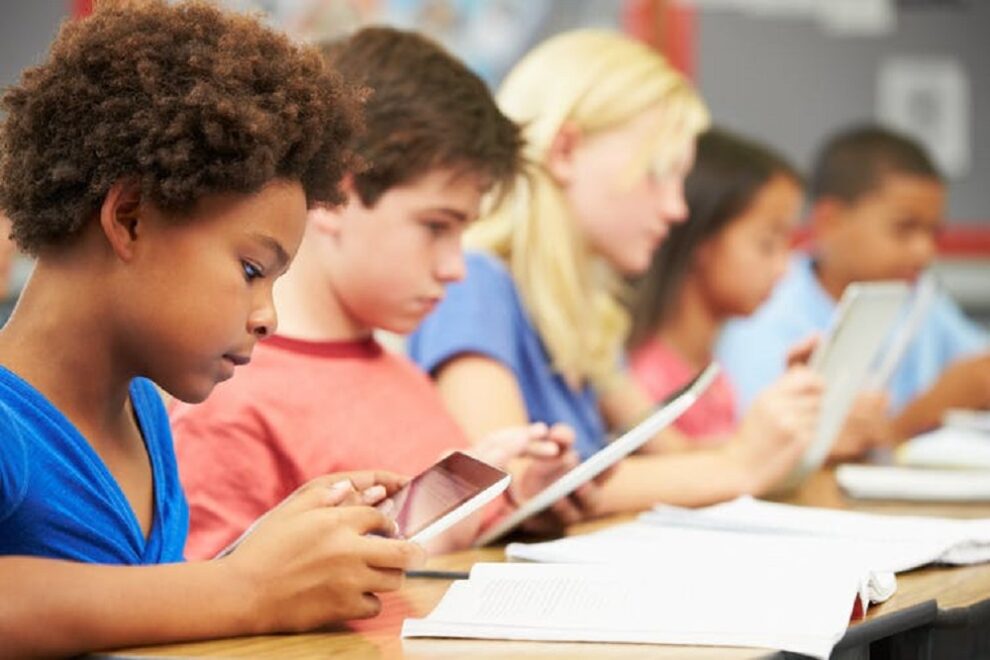Minnesota Republicans continue to criticize Gov. Tim Walz and his allies for refusing to change new legislative language governing how adults are allowed to use force in schools.
The new language prohibits school employees — including police known as school resource officers — from using prone restraints on students, or placing them in a face-down position. They also can’t use restraints that inhibit a student’s ability to breathe or voice distress, though they can act “to prevent imminent bodily harm or death to the student or to another.”
Several police departments have withdrawn from policing school districts in the current academic year over concerns the language could open them up to lawsuits.
The unspoken assumption behind much of the debate is that schools can be a dangerous place, and that a police presence empowered to use physical force against students is necessary to maintain their safety and security. But there’s been little discussion of whether that assumption is actually true, or whether armed law enforcement officials are the best solution for whatever disciplinary problems schools may be facing.
There are a number of high-quality data sources that can be used to measure the safety of Minnesota schools, but they all come at the problem from different angles. They include surveys that ask students about their experiences in school, official school disciplinary reports, and data submitted by police agencies on the level of youth criminality in any given year.
We’ve plotted a number of those findings below.
Students’ perceptions of school safety have declined modestly

Since 2013 the Minnesota Student Survey has asked students how safe they feel at school, as well as their experiences with violence. The proportion of 11th graders saying they agree or “strongly” agree with the statement “I feel safe at school” has consistently hovered around 90%.
The share saying they “strongly” agree fell from 50% in 2016 to 26% in 2022. There are many factors that can feed into this perception — a deteriorating school environment, for instance, but also concern over external threats like mass shootings. The data show a similar trend in students’ feelings of perceived safety at home and in their neighborhoods.
Minnesota students aren’t reporting an uptick in violence

The survey also asks whether students have personally been hit, slapped, shoved or kicked at school by someone who wasn’t kidding around. That figure hasn’t changed at all: 92% of 11th-graders said they “never” experienced that in 2013, and 93% said the same in 2022. That suggests any growing concerns about safety may be more related to external factors than to students’ personal experiences.
Student discipline is up in recent years, but flat over the long term

The Department of Education reports major disciplinary incidents — primarily those resulting in out-of-school-suspensions — to the state Legislature every year. The biggest driver of those incidents is general disruption and disorderliness, which usually account for about 20 to 30% of those disciplinary actions.
Fighting and physical assaults make up another major share, at around 20% in recent years.
The 69,000 major disciplinary incidents reported in 2022 are similar to the numbers reported in the late 2000s and early 2010s. Numbers declined after 2012, hitting a low of 46,000 in 2015. Since then, the count has steadily increased.
At-school fights and violence are often lumped in with broader crime trends in popular discourse. But unlike violent crime, there’s no discernible pandemic-era spike in student violence. The number of major disciplinary actions in 2022 was down slightly from the number reported in 2019.
Data for 2020 and 2021 aren’t comparable, as many schools were closed due to the COVID-19 pandemic. Overall school enrollment had been steadily increasing over most of the 21st century, and then dropped off sharply during the pandemic.
Teenagers are, broadly speaking, much better behaved than they used to be

Rates of drug use, alcohol use, premarital sex and interpersonal violence are all down among American teenagers. Juvenile arrest data show a similar trend: From 2001 to 2022, the number of teenagers arrested in Minnesota fell from 52,000 to 10,500, a decrease of nearly 80%. By comparison, adult arrests are down by about 40% over that period.
Juvenile arrests did increase slightly between 2021 and 2022, so it’ll be a worth keeping an eye on that number to see if that’s just a blip or the start of a trend.
Arrests aren’t a perfect measure of student behavior. They only reflect criminal activity, and it’s likely that changes to policing and other factors are influencing these numbers as well. But in general, a sharp decline of juvenile arrests is a sign that youth behaviors are a lot less risky than they used to be.
None of this is to suggest that some schools aren’t facing very real disciplinary challenges. Acts of violence, like a fatal stabbing at a St. Paul high school earlier this year, do happen and can have devastating effects on the families and communities involved.
But these incidents are the exception, rather than the rule. The generally positive data from student surveys and the relatively stable trend in disciplinary actions, coupled with plummeting arrest rates, suggest overall that the situation in Minnesota schools is a lot less dire than politicians and law enforcement officers are giving them credit for.
Do you know of any good barometers of the school environment that we overlooked? Drop us a line.
Source : Minnesotare Former





































